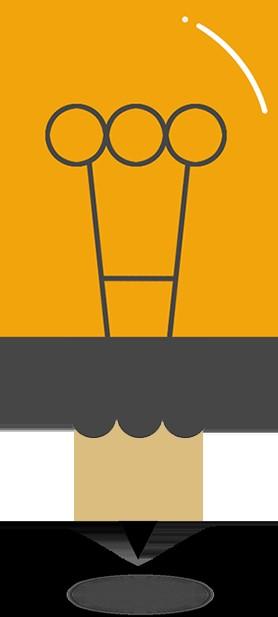
Practical Questions
Personal Questions
Relationship Questions








Ongoing-Process Questions















In the decision on which strategy to use in answering a particular question, one of the important factors for the therapist to consider is the type of question.
▪ commonsense information
▪ These questions can have underlying hidden meaning Examples

▪ What time is it?
▪ Can I go to the bathroom?
▪ Where is my mother?
▪ Is this a dog or a wolf puppet?
▪ A need to increase their knowledge of therapist’s life
▪ Feeling exposed due to the fact that therapist know more about them
▪ Enhance their feeling of connectedness with therapist

▪ Do you have any children?
▪ Where do you live?
▪ Are you married?
▪ older or more “streetwise” → power
▪ Who have poor boundaries or have experienced sexual abuse → acceptable

▪ Do you like sex?
▪ Do you and your wife/husband “do it”?
▪ What do you wear to bed?
▪ Would you like to touch my privates?
3. Relationship Questions
▪ commonsense information
▪ personal feeling professional perspective → really care
▪ Two different messages
1. obvious, literal meaning
2. underlying hidden meaning
Examples : Who else comes here?
1. the name of other clients
2. Are there other children that you care for?


▪ Do you like me?
▪ How many children come here?
▪ Are you happy to see me?
▪ Don’t you wish I could stay longer?

▪ “the parameters of the process of play therapy and the boundaries of the relationship between them and the play therapist”(Kottman)
▪ solicit help from therapist
▪ explore the rules in play room
▪ get the therapist to read their minds
▪ make decisions for them

1. obvious, literal meaning
2. underlying hidden meaning
1. Can I shoot the dart gun at you?
2. Will you let me do something to hurt you?

▪ Would you like it better if I paint this barn red?
▪ Can I throw this ball in your face?
▪ What do you think I am going to do now?
▪ What should I do next?

Do I know any of the other kids who come here?
▪ Practical question
She could with whom get a ride to the clinic
▪ Relationship question
She feels jealous
▪ Child is usually focused on the literal meaning or the question, and the more hidden meaning is out of his/her awareness.
▪ Make a guess
→ has a recognition
→register the new awareness

Decline to answer with a polite manner


▪ Sometimes the most sensible strategy for dealing with children’s questions in therapy is to simply answer them.
▪ Sometimes the best answer combines a guess about purpose or interpretation of the meaning of the query with general caring response designed to convey accept and understanding to the child.

▪ If the therapist decides to answer questions, replies should be brief and just a straightforward as the queries, conveying simple information such as time, dates, directions, and so forth.


▪ “Do you like me?”
▪ I care about all of the children who come to play with me.
▪ I think kids are the greatest people in the world.
▪ I care about you a great deal.
▪ You’re a very special person.
▪ You’re really important person to me.
▪ Ignore the questions doesn’t mean ignore the children.
▪ When choosing this method, therapists try to encourage children to answer themselves by making eye contact and smiling in a caring way.
▪ Nonverbally conveying a confidence that the child can answer his own questions without assistance.



▪ To convey interest and understanding in as few words as possible.
▪ This strategy work with all 4 types of questions but especially appropriate with practical questions and questions about ongoing play therapy process.
▪ Reply the child with a statement or a question which has the same meaning with original question.

▪ It’s appropriate for 4 types of questions and is used most often in a nondirective approach.


▪
“What time is it?”

▪ You want to know what time is it.

▪
“Do you like Asian people?”
▪ You want me to tell you how I feel about Asian people like you and your family.


▪
“Do you have any children?”
▪ Do I have any children? ▪

“Do you like me?”
▪ Do I like you?
▪ Do I care about you?

▪ It helps clarify the child’s intention and gaining an awareness of any underlying message communicated by the question.
▪ response in the form of tentative hypotheses
→ feedback about the accuracy and relevancy
▪ effective with practical questions with multiple interpretations

Example: guessing/ interpreting/ why

▪ “Can we play a game today?”
▪ You sound like you might have already figured out what you want to do today.
▪ I’m guessing you would like to decide what we are going to do in here today.
▪ It seems like you’re wondering if I would be willing to play with you this morning.
▪ The therapist would usually do this with practical questions or when asked to help deciding questions about ongoing process.
▪ Appropriate for nondirective and directive play therapists.

▪ You can decide that for yourself.
▪ I bet you can figure that out.
▪ In here, it can be whatever you want it to be.
▪ You are the only one who can know what you are going to do next.
▪ Used more in directive play therapists.
▪ Works with any types of question, depending on the therapist.

▪ What did you want to use to hit the mirror?
▪ So you’re asking if you can jump from the top of the pillows onto what?
▪ Do you really want to know if I like girls better than boys, or do you want to know if I like you or your brother best?
▪ Whisper Technique
▪ When child asks a question, therapist uses a whisper voice to ask, “What should I say?”

▪ Works best with practical and ongoing-process questions.


▪ Therapist should decline to answer personal questions that violate socially appropriate boundaries.
▪ It is important to avoid sounding judgmental about the question.
▪ Limiting this type of question is essential to setting good therapeutic boundaries.

▪
“Why did you have to adopt your son?”
▪ I choose not to answer that question.
▪
“Do you like thong underwear?”
▪ I don’t answer private questions like that.
▪

“How often do you have sex with your husband?”
▪ That is private and isn’t for discussing with other people.
